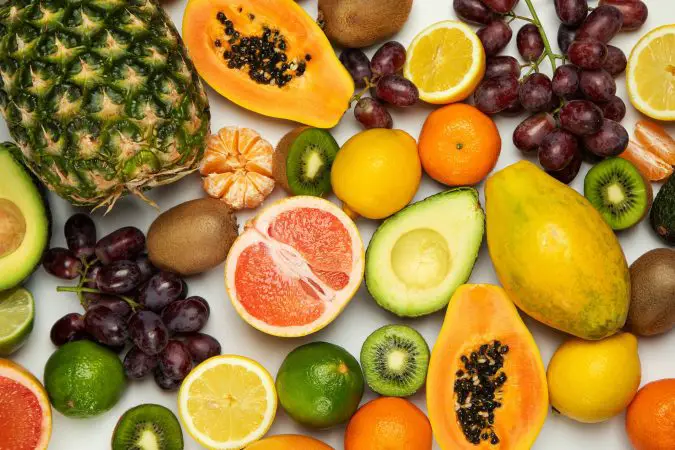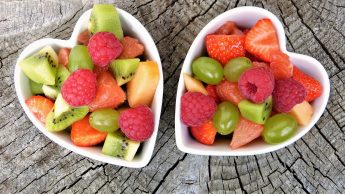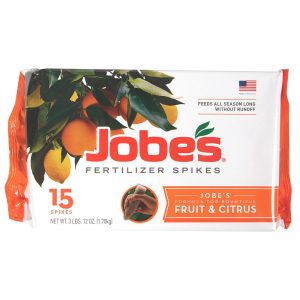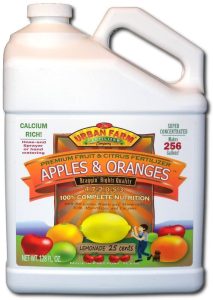When you think of fruits, you think of apples, grapes, cherries, bananas, oranges, berries, pears, mangoes, melons, and so on. The few things that you know about fruit are that they contain plenty of vitamins and minerals, and they are also rich in fiber. Therefore, if you have a sweet craving, then you are better at grabbing a piece of fruit over candy.
At the same time, you don’t want to overeat fruit, or else you will consume plenty of sugar. Even though the sugar in fruits is natural, it is still sugar, and it can cause your blood glucose levels to rise.
Therefore, stick to any recommended servings of fruit per day by a nutritionist or dietician. However, aside from the nutritional side of fruit, there are other things about fruits that you would be fascinated to know.
Have you wondered how many fruits are in the world? Let’s now talk about how many fruits there are worldwide, and other fascinating information as well.
Quick Summary
In this article, you will find out the different types of fruits and their examples.
Without further ado, let’s get started
How Many Types Of Fruits Are There?

You would be surprised to learn that there are around 2,000 types of fruit worldwide, and that is only an estimation. There are likely more fruits than that. Discoveries happen all of the time, which means new fruits will keep popping up as botanists make discoveries.
However, plenty of inedible fruits are poisonous, such as coyote melon, baneberry, alpine honeysuckle, and sea mango. Those are the fruits that you see hanging from trees in your neighborhood, and you tell your kids or grandkids never to touch them because they are poisonous.
Another exciting thing about fruits is that some vegetables are fruits. The salads that you eat for lunch or dinner contain some fruits. You may know this already, but not everyone knows that there are plenty of fruits that fit the role of vegetables.
It boils down to knowing the definitions of fruits and vegetables. Vegetables are edible parts of a plant, such as flower buds like broccoli or roots such as carrots.
However, fruits are a specific part of a plant: the mature ovary and its contents and seeds. Therefore, you’ll see how your vegetable salad has some fruits! Let’s now go over some fruits that you think of as vegetables.
Olives
The idea of pineapple on pizza excites some people but not others so much. However, if you like olives on your pizza, you eat pizza with fruit. That is because olives are fruits! Specifically, olives are stone fruits or dupes.
Examples of stone fruits are
- apricots
- cherries
- peaches
- plums
- nectarines
- dates
- mangoes
Olives are in that category as well, even though they taste differently. When botanists decide what parts of plants are fruits and what parts of plants are vegetables, they do not include the taste when making that distinction. If you like adding olives to your salads, then you are eating fruit in salads.
Avocado
You may have heard that avocado is not only a fruit but a berry. That seems odd since avocados have a tasty fatty flavor, whereas berries are sweet. However, avocados are berries because it features a thin layer that keeps the seed protected known as the endocarp. Drupe fruits such as nectarines have a thick endocarp which is why nectarines are not berries.
Therefore, when you are enjoying your avocado on toast, you are spreading the flesh of the berry on it. When you add avocado slices to your salad or add it into sushi, you are adding the berry into that as well.
Cucumbers
What is the difference between a cucumber, watermelon, and a canteloupe? Nothing! That is because they are all fruits. You eat the flesh of the fruit, and there are tiny seeds in it.
You will not eat the black seeds with watermelons, but the white seeds are acceptable for consumption. Zucchinis, butternut squash, and acorn squash are in the same category as well.
You may have thought that pumpkin was a fruit instead of a vegetable, and if that is the case, you are right. Pumpkin is also a type of squash.
Tomatoes
You probably knew that tomatoes are fruit, and if you didn’t know it before, you know it now. They are the ovary of a plant with seeds, which is why they are technically fruits. However, tomatoes do not go well with other fruits, and they only go well with other vegetables.
In 1893, the American Supreme Court decided that tomatoes were vegetables, even though tomatoes were long considered fruits. That was due to a case involving high import taxes on vegetables.
Eggplants
Eggplants are fleshy fruits with seeds as they grow from the Solanum melongena plant flowers. However, like tomatoes, they do not go well with other fruits.
Many people also prefer to eat their eggplants cooked, baked, or fried. Many cultures use cooked or fried eggplants in their dishes. Some cultures roast eggplant pieces and add them into salads, such as in many Mediterranean regions.
Other similar fruits to eggplants are peppers; whether they are hot, mild, or sweet, red, green, or yellow – they are all part of the same family.
Interested in finding more about types of fruits and vegetables, CLICK HERE.
Check out the best fertilizers for fruits
Show Contents
Hide Contents
Conclusion
When you think of fruits, you would think of apples, oranges, plums, berries, nectarines, and bananas. You think of a snack or something you would eat for breakfast. You certainly would not think of fruit being in your salad unless it is a Waldorf salad that consists of tart apple pieces and grapes.
However, if you add peppers, cucumbers, tomatoes, and avocado slices in your salad, you add fruit in there.
The number of fruits in the world is around 2,000 types. That includes the fruits that you know, the fruits that you thought were vegetables, as well as poisonous inedible fruits‘. There are likely more than that because botanists make discoveries all of the time.
There likely are plenty of more types of fruit that they don’t know about yet. Only time will tell when that does end up happening.
Check out our website for more content like this.








